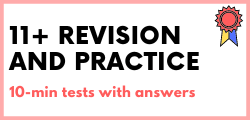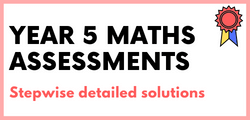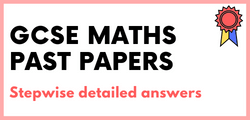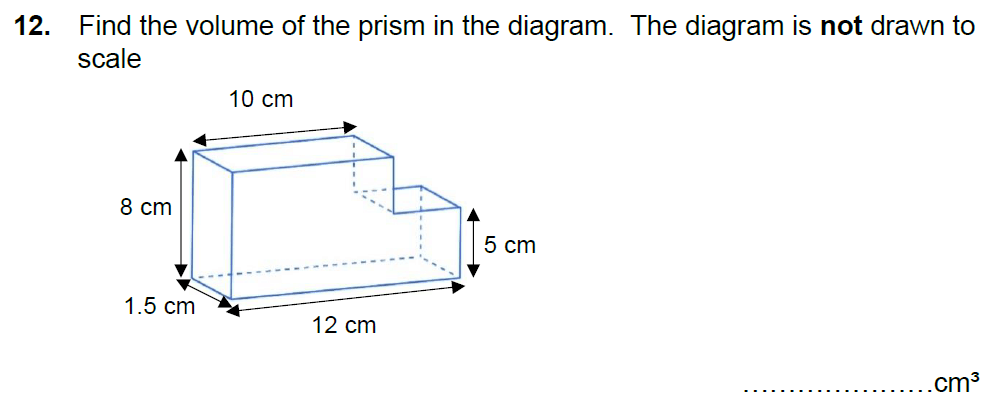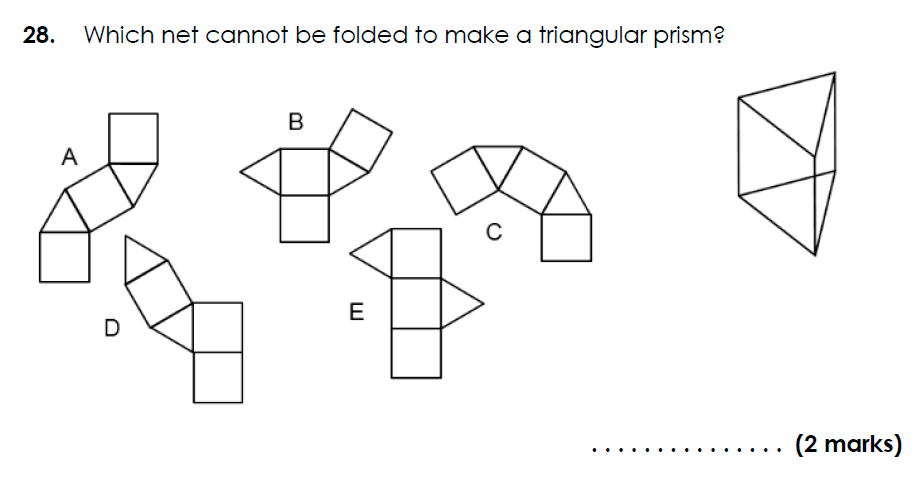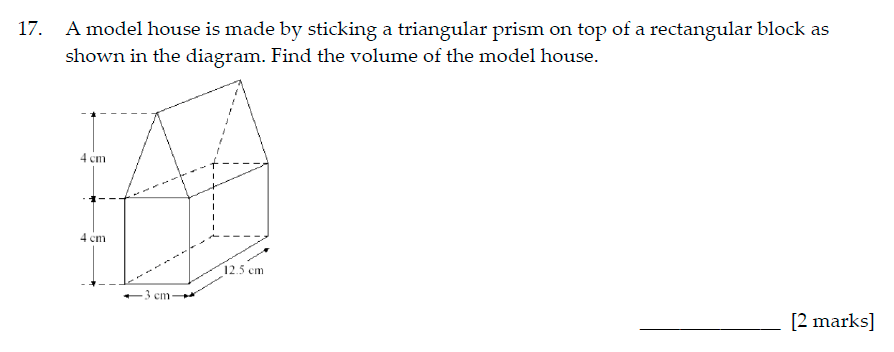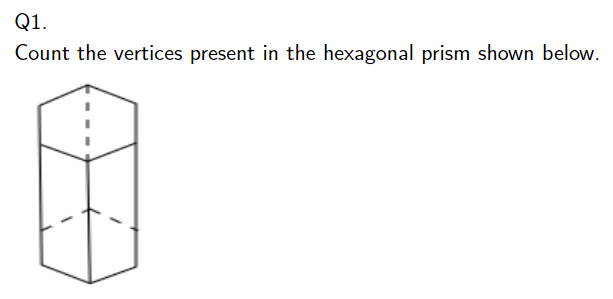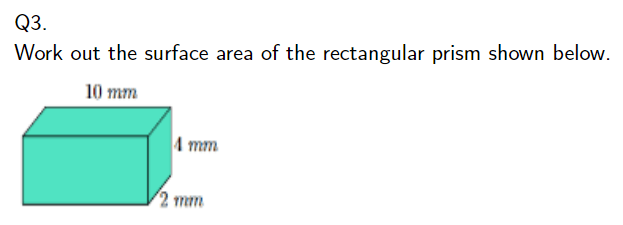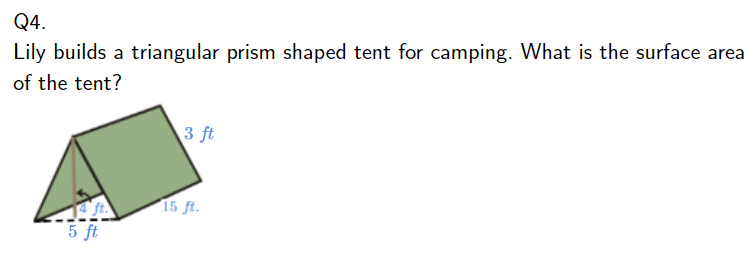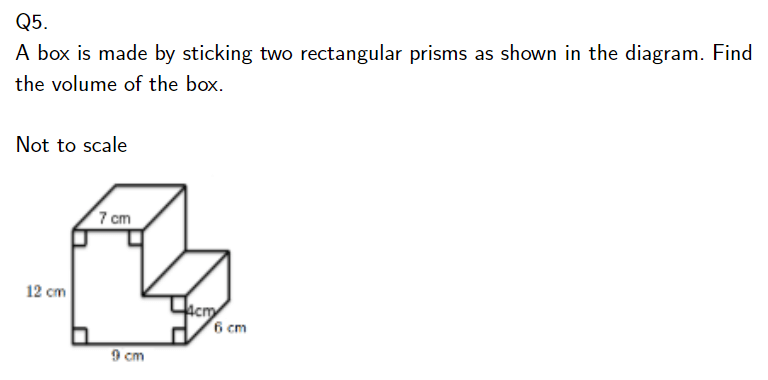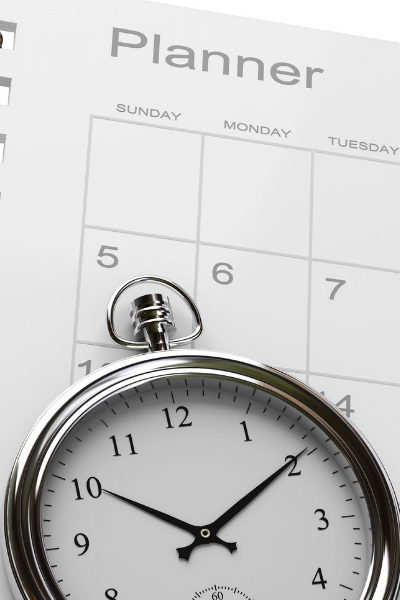1. What is a Prism?
A prism is a 3D shape having the same face at both ends. These same two faces are simple polygons like triangles or squares or pentagons. The other remaining faces are rectangles.
Prism also has a constant area of cross section. In 11 Plus Exams, you may be asked to find the number of faces, edges and vertices of different types of prisms and their volume and surface areas. Let us begin with some simple types of prisms and their properties.
1.1 Triangular Prism and its properties
When a prism has triangular faces at both ends, it's called a triangular prism.
A triangular prism is shown below.
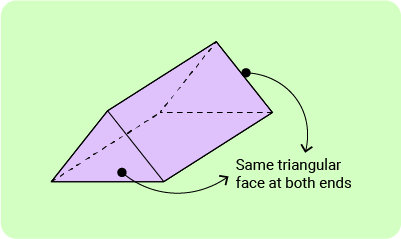
Properties:
- It has triangular faces at both ends
- Number of edges (lines) = 9
- Number of vertices (corners) = 6
- Number of faces = 5 (2 triangular faces and 3 rectangular faces)
1.2 Rectangular Prism and its properties
When a prism has rectangular faces at both the ends, it's called rectangular prism.
Look at the rectangular prism shown below,
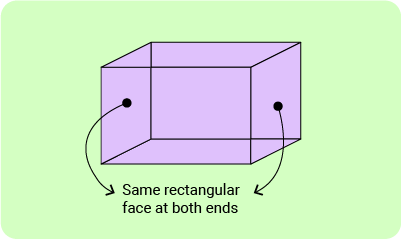
You can see that the rectangular prism is actually a cuboid. So a rectangular prism and a cuboid have the same properties.
Properties:
- It has rectangular faces at both ends
- Number of edges (lines) = 12
- Number of vertices (corners) = 8
- Number of faces = 6 (6 rectangular faces)
1.3 Pentagonal Prism and its Properties
Prisms with pentagonal faces at both ends are called pentagonal prisms.

Properties:
- It has pentagonal faces at both ends
- Number of edges (lines) = 15
- Number of vertices (corners) = 10
- Number of faces = 7 (2 pentagonal faces and 5 rectangular faces)
2. Formula for Surface area of different prisms
Surface area of a prism is defined as the total area occupied by all the faces of the prism. The surface area of a 3D prism depends on the shape of the base.
Surface area of a prism = Area of common faces + Area of rectangular faces
Let us now see the formulas for surface areas of different prisms:
a) Triangular Prism
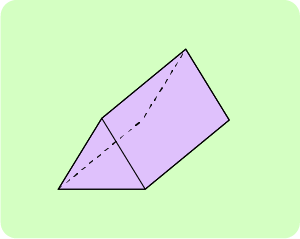
Surface area = Area of two triangular faces + Area of 3 rectangular faces
b) Rectangular Prism
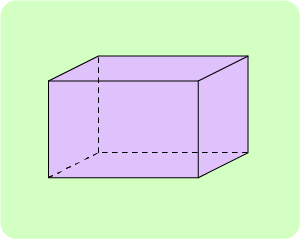
Surface area = Area of six rectangular faces
Surface area of the rectangular prism is same as the surface area of a cuboid.
c) Pentagonal Prism
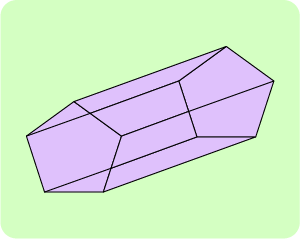
Surface area = Area of two pentagonal faces + Area of five rectangular faces
2.1 Solved Example
Work out the surface area of the triangular prism shown below if
h = 4 cm, b = 5 cm, L = 12 cm.
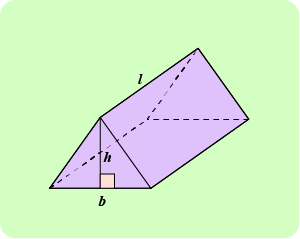
Solution:
Surface area of triangular prism = Area of 2 triangular faces + Area of 3 rectangular faces
Area of one triangular face = 1⁄2 × b × h
= 1⁄2 × 5 × 4 = 10 cm²
Area of one rectangular face = L × b
= 12 × 5 = 60 cm²
Surface area of the triangular prism = 2 × 10 + 3 × 60
= 20 + 180 = 200 cm²
3. Formula for Volume of different prisms.
From the properties of prisms, you can see that it has two common faces and rectangular faces. Now, in order to work out the volume of any type of prism, you need to multiply the area of cross-section(which is the area of the triangle in a triangular prism) by the length of the prism (which is the length of the rectangle face in the prism).
Volume of any prism = Area of cross-section × Length of prism
For a triangular prism shown below,
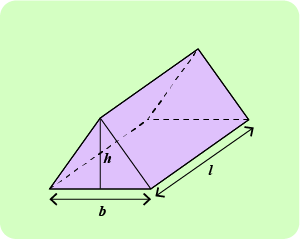
If the length of the prism is l, b and h are base of common triangular face respectively,
Volume of triangular prism = Area of triangular face × Length of prism
= 1⁄2 × b × h × l
Similarly you can work out the volume for different types of prisms. A key point about Volume is its always measured in cubic units like cm³, m³, in³, etc.
3.1 Solved Example
The volume of the triangular prism shown below is 1125 cm³.
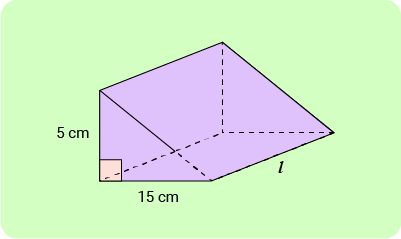
Work out the length of the prism l.
Solution: Volume of triangular prism = Area of triangular face × length of prism
Base of triangular face (b) = 15 cm
Height of triangular face (h) = 5 cm
So volume of triangular prism = 1⁄2 × b × h × l
1125 = 1⁄2 × 15 × 5 × l
1125 × 2 = 75 × l
2250 = 75 × l
l = 2250 ÷ 75
l = 30 cm
The length of the prism is 30 cm.



















